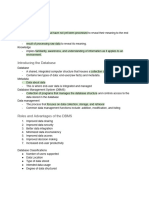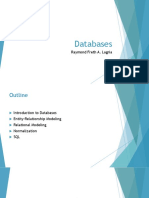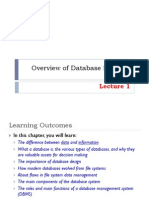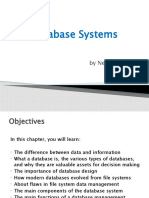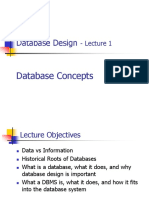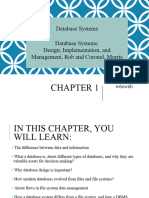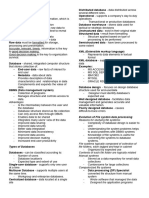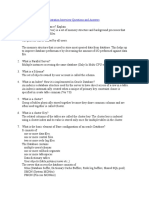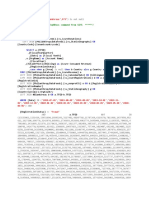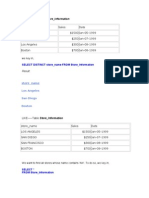0% found this document useful (0 votes)
60 views41 pagesIntroduction To DBMS
The document provides an introduction to database systems, covering key concepts such as the difference between data, information, and knowledge, the importance of database design, and the functions of a Database Management System (DBMS). It outlines various types of databases and their classifications, as well as the evolution from file systems to modern databases. Additionally, it highlights the advantages and disadvantages of database systems and emphasizes the significance of effective data management for organizational decision-making.
Uploaded by
danm29309Copyright
© © All Rights Reserved
We take content rights seriously. If you suspect this is your content, claim it here.
Available Formats
Download as PDF, TXT or read online on Scribd
0% found this document useful (0 votes)
60 views41 pagesIntroduction To DBMS
The document provides an introduction to database systems, covering key concepts such as the difference between data, information, and knowledge, the importance of database design, and the functions of a Database Management System (DBMS). It outlines various types of databases and their classifications, as well as the evolution from file systems to modern databases. Additionally, it highlights the advantages and disadvantages of database systems and emphasizes the significance of effective data management for organizational decision-making.
Uploaded by
danm29309Copyright
© © All Rights Reserved
We take content rights seriously. If you suspect this is your content, claim it here.
Available Formats
Download as PDF, TXT or read online on Scribd
/ 41




